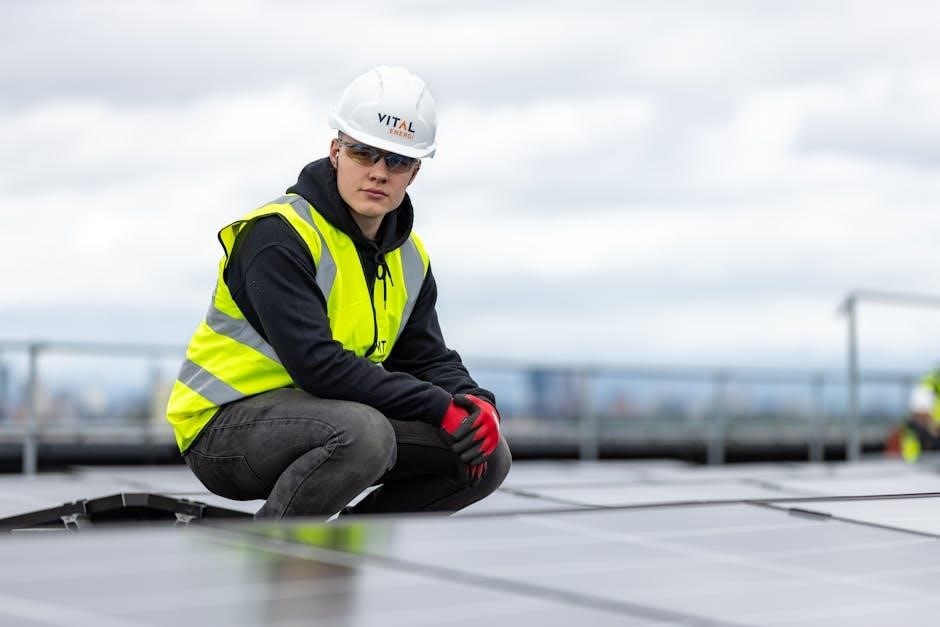Honeywell TH6110D1005 Installation Manual: A Comprehensive Guide
This guide provides a thorough walkthrough of the Honeywell TH6110D1005 thermostat installation, covering everything from pre-installation preparations to system testing. It includes detailed instructions for wiring, configuration, and troubleshooting, ensuring a smooth and successful setup for optimal home comfort and energy efficiency.
The Honeywell TH6110D1005, part of the FocusPRO 6000 series, is a user-friendly programmable thermostat designed for efficient home climate control. This thermostat is suitable for both conventional and heat pump systems, offering flexibility in installation and application. It features a clear, standard display for easy reading and intuitive programming.
The TH6110D1005 allows for 5-1-1 day programming, enabling different temperature settings for weekdays and weekends to match your lifestyle. With its straightforward interface, users can easily set up heating and cooling schedules, optimizing energy consumption and reducing utility bills. The thermostat also supports basic functions such as setting the desired temperature, switching between heat and cool modes, and adjusting fan settings.
This installation manual provides a step-by-step guide to properly install and configure the TH6110D1005, ensuring seamless integration with your HVAC system. Whether you are a seasoned HVAC professional or a DIY homeowner, this guide offers the necessary information to achieve a successful installation and enjoy the benefits of a reliable and efficient thermostat.
Specifications of the TH6110D1005
The Honeywell TH6110D1005 thermostat boasts several key specifications that make it a versatile choice for various HVAC systems. It is designed for 1 heat/1 cool conventional and heat pump systems, making it suitable for a wide range of residential applications. The thermostat operates on a voltage of 20-30 VAC, 750 mV, ensuring compatibility with standard home electrical systems.
This model features terminals labeled R, Rc, C, W (O/B), Y, and G, providing clear connection points for different wiring configurations. The TH6110D1005 supports 5-1-1 day programming, allowing users to set separate schedules for weekdays, Saturday, and Sunday. It also includes an adjustable temperature range to suit individual comfort preferences.
Additional specifications include a standard display for easy readability and intuitive operation. The thermostat can be powered by batteries, offering flexibility in installation, especially in situations where a common wire is not available. With its focus on ease of use and broad compatibility, the Honeywell TH6110D1005 is a reliable and efficient option for controlling your home’s heating and cooling systems.
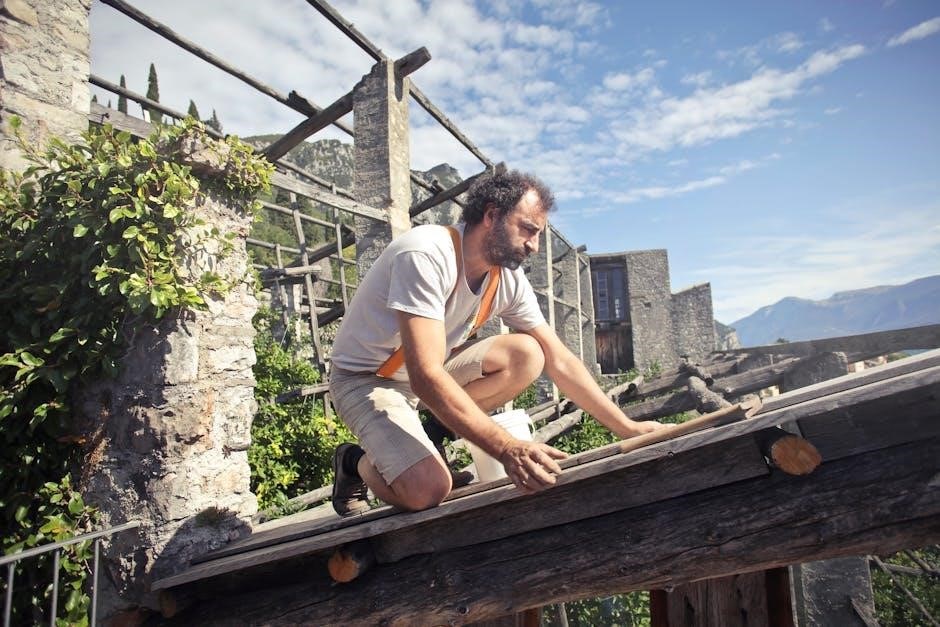
Pre-Installation Checklist: Tools and Supplies
Before commencing the installation of the Honeywell TH6110D1005 thermostat, it is crucial to ensure you have all the necessary tools and supplies readily available. Proper preparation will streamline the process and prevent unnecessary delays.
Essential tools include a screwdriver set (both Phillips and flathead), a wire stripper, and a pair of pliers. A level is also necessary to ensure the thermostat is mounted straight on the wall. For safety, always have a voltage tester to confirm that power to the existing thermostat wiring is turned off before beginning any work.
In terms of supplies, you will need wire connectors (such as wire nuts) to securely join the thermostat wires to your home’s wiring. Additionally, have some electrical tape on hand for insulation and securing connections. If mounting the thermostat on drywall, ensure you have appropriate wall anchors or screws. Finally, fresh batteries may be required if you plan to operate the thermostat without a common wire connection. Gathering these items beforehand will facilitate a smooth and efficient installation.
Wallplate Installation Guide
The wallplate installation is a critical step in setting up your Honeywell TH6110D1005 thermostat. Begin by carefully removing the old thermostat from the wall, exposing the existing wiring. Before proceeding, always switch off the power at the circuit breaker to ensure your safety.
Next, detach the wallplate from the new TH6110D1005 thermostat. Position the wallplate on the wall where you want to mount the thermostat, using a level to ensure it’s perfectly straight. Mark the screw locations through the mounting holes on the wallplate.
If you’re mounting on drywall, drill pilot holes at the marked locations using a 3/16-inch drill bit. For plaster, use a 7/32-inch drill bit. Insert wall anchors into the pilot holes if necessary. Secure the wallplate to the wall using the provided screws. Ensure the wallplate is firmly attached and doesn’t wobble. This stable base is essential for the proper functioning of the thermostat.
Wiring Instructions for the TH6110D1005
Proper wiring is paramount for the correct operation of your Honeywell TH6110D1005 thermostat. After securing the wallplate, carefully connect the wires from your HVAC system to the corresponding terminals on the thermostat’s base. Consult the wiring diagram included in the manual or on the thermostat itself to identify the correct terminal designations.
Typically, you’ll encounter wires such as R (power), Rc (cooling power), C (common wire, often optional with battery power), W (heating), Y (cooling), and G (fan). Ensure each wire is securely connected to its designated terminal. Loose connections can lead to malfunctions or system failures.
If you have a heat pump system, you might also have wires for O/B terminals, which control the reversing valve. For two-transformer systems, remove the factory-installed jumper between R and Rc terminals. If you’re using a common wire, connect it to the C terminal. Double-check all connections to confirm they are tight and accurate before proceeding to the next step. Correct wiring guarantees optimal performance.
Terminal Designations Explained
Understanding the terminal designations on the Honeywell TH6110D1005 thermostat is crucial for successful wiring. Each terminal corresponds to a specific function within your HVAC system. The “R” terminal typically denotes the 24VAC power supply, essential for the thermostat’s operation. “Rc” is often used for the cooling system’s power, and in some setups, a jumper connects “R” and “Rc.”
The “C” terminal, or common wire, provides a stable power return path and is optional when using battery power. “W” controls the heating function, while “Y” manages the cooling. The “G” terminal activates the fan, allowing for independent fan operation. For heat pump systems, “O” or “B” terminals control the reversing valve, determining whether the system heats or cools.
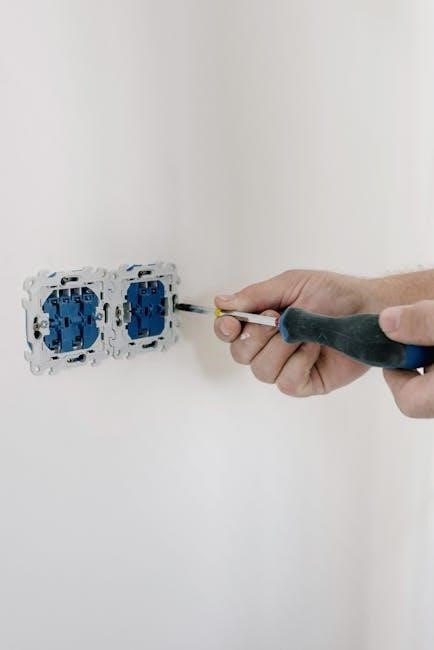
Incorrectly wiring these terminals can lead to system malfunctions or damage. Always refer to the wiring diagram specific to your system configuration to ensure proper connections. If unsure, consult a qualified HVAC technician to avoid potential issues. Accurate terminal connections are the foundation of a properly functioning thermostat.
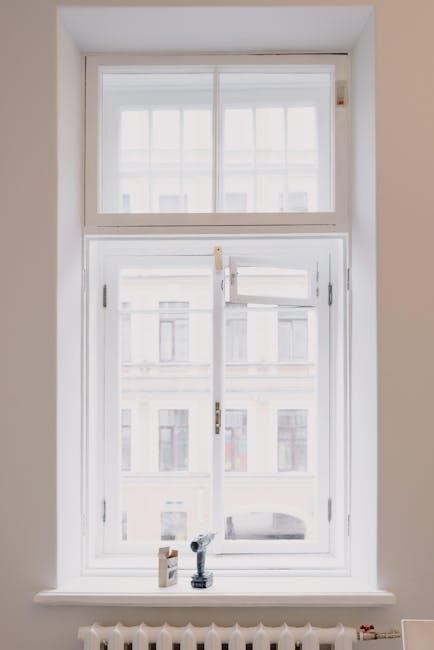
Wiring Diagrams: Power Options and Mounting
The Honeywell TH6110D1005 thermostat offers flexibility in power options and mounting configurations, each with its own specific wiring diagram. Understanding these diagrams is essential for a correct and safe installation.
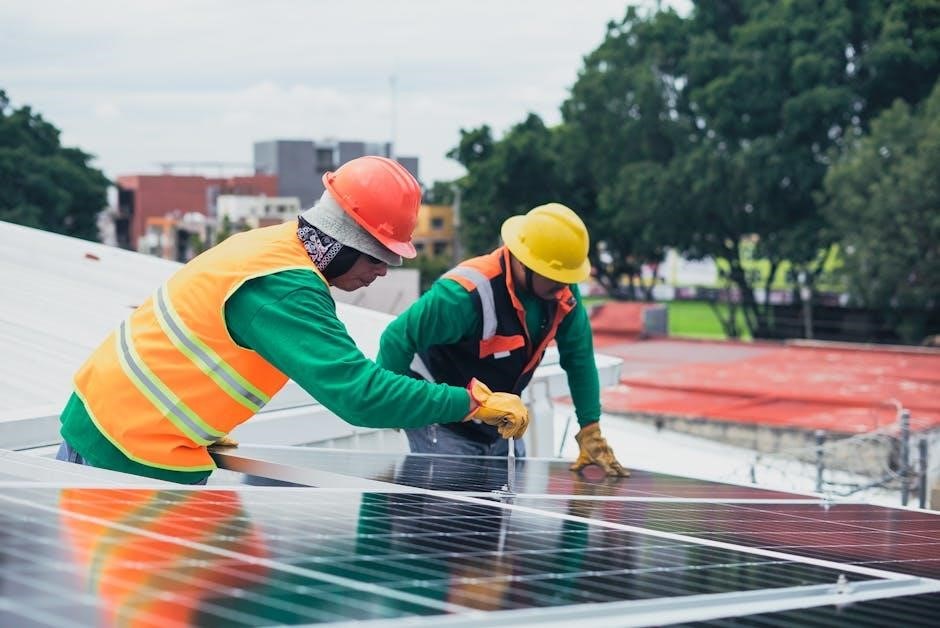
For standard systems, the thermostat can be powered via AC power, utilizing the “R” and “C” terminals, or through battery power, which requires no “C” wire connection. Wiring diagrams illustrate how to connect the heating, cooling, and fan wires to their respective terminals, ensuring proper functionality. Special attention should be given to heat pump systems, where the “O/B” terminal controls the reversing valve.
Mounting the thermostat involves securing the wallplate to the wall, ensuring it’s level and properly aligned; Wiring diagrams often show the placement of mounting screws and the route for wires through the wallplate. For two-transformer systems, a factory-installed jumper may need to be removed. Always consult the diagrams and follow instructions closely to prevent wiring errors and ensure optimal performance.
Installer Setup: Configuring the Thermostat
The Honeywell TH6110D1005 requires proper configuration through the installer setup menu to ensure it operates correctly with your specific heating and cooling system. Accessing this setup allows you to customize various parameters, tailoring the thermostat to your home’s needs.
Within the installer setup, you’ll define the system type, such as conventional heating/cooling or heat pump. You’ll also configure the number of heating and cooling stages, ensuring the thermostat accurately controls your equipment. Other settings include the temperature scale (Fahrenheit or Celsius), temperature swing (cycle rate), and whether to enable auto changeover between heating and cooling modes.
Navigating the installer setup typically involves pressing and holding specific buttons on the thermostat until the setup menu appears. Follow the on-screen prompts and consult the installation manual for detailed instructions on each setting. Accurate configuration is crucial for optimal performance and energy efficiency, so take your time and double-check each setting before exiting the setup menu.
Installer System Test: Verifying Functionality
After configuring the Honeywell TH6110D1005, it’s crucial to perform a system test to verify that all components are functioning correctly. This test ensures that the thermostat is communicating effectively with your heating and cooling equipment, preventing potential issues down the line.
The system test typically involves manually activating the heating and cooling systems through the thermostat’s control panel. You should observe whether the corresponding equipment turns on and off as expected. For example, when you set the thermostat to heating mode, the furnace or heat pump should engage, and warm air should begin circulating. Similarly, in cooling mode, the air conditioner should activate, and cool air should be produced.
Pay close attention to the response time of the equipment. Delays or unusual noises may indicate wiring problems or other underlying issues. If any discrepancies are observed during the system test, consult the troubleshooting section of the installation manual or contact a qualified HVAC technician for assistance. Proper system testing is essential for ensuring reliable and efficient operation of your heating and cooling system.
Troubleshooting Common Installation Issues
Even with careful adherence to the installation manual, unforeseen issues can arise during the installation of the Honeywell TH6110D1005 thermostat. This section addresses some common problems encountered and provides troubleshooting steps to resolve them.
One frequent issue is the thermostat not powering on. This could stem from incorrect wiring, a tripped circuit breaker, or depleted batteries (if applicable). Double-check the wiring connections according to the wiring diagrams and ensure the circuit breaker is not tripped. Replace the batteries with fresh ones to rule out power supply problems.
Another common problem is the heating or cooling system not responding to the thermostat’s commands. This may be due to incorrect terminal connections or misconfigured system settings. Verify that the wires are connected to the correct terminals and that the thermostat’s system type is configured correctly in the installer setup menu. If problems persist, consult an HVAC professional for assistance. Addressing these common installation issues promptly can ensure the thermostat’s proper operation and prevent further complications.
